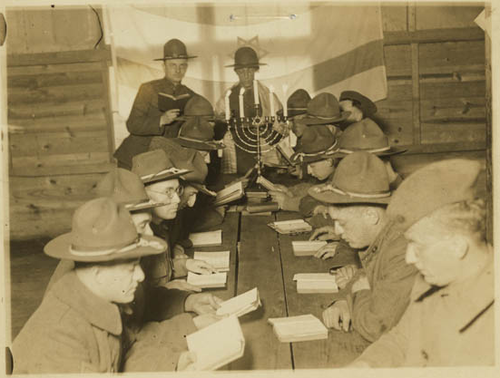This post was written by Kat Fanning,
conservation technician, Center for Jewish History
A cookie, a memento of a past special event, was brought to
the conservation lab from the American Sephardi Federation (ASF) to see if anything
could be done in order to preserve it so that it could be kept in the
collection. The cookie had originally been stored in a plastic box and sealed
with office tape. It appears to be a simple butter cookie coated in frosting
but the exact ingredients of the cookie are unknown. There was no oil staining
or residue of any kind on the cookie or in the box it was stored.

The cookie was in excellent shape, only one broken corner,
but it was necessary to find a way to prevent deterioration. The cookie itself,
or any crumbs that fall into a part of the collection, could usher in unwanted
pests. Any pests in a collection can cause serious physical damage and can be
difficult to get rid of.
Sealing the cookie also meant mold prevention, which is especially important
since mold from food can easily spread to other parts of the collection via
airborne spores. Under humid or hot conditions, mold grows very rapidly.
I found a few possibilities to seal the cookie, including wax
and Paraloid.
Paraloid is an acrylic resin that could be used to consolidate any fragments,
ensuring that no cookie pieces crumble and fall off. Wax works in a similar
fashion, but it is temperature sensitive. Since there was little degradation of
the cookie, only corners missing, and no accumulation of fats from any butter
there was no imminent need to consolidate. With the guidance of Preservation
Services Manager, Felicity Corkill, it was decided that there was no need for
invasive treatment and that a storage box would be sufficient.
The cookie was sealed with a heated spatula in a
polyethylene plastic bag. An insert of Ethafoam, a polyethylene foam used for
padding, was molded to the shape and contours of the cookie to prevent any
significant movement within its housing, and then adhered inside a clam shell
storage box made from E-flute cardboard.
Now this unusual artifact can be stored safely in
American Sephardi Federation’s
collection for many years.

Editor’s
note: When looking into the history of the cookie with the assistance of the Director of the Library and Archives for the American
Sephardi Federation, we learned that it was baked in honor of a gala celebrating the merger of
the American Sephardi Federation and Sephardic House on December 10, 2002. The
event coincided with the Seventh
International Sephardic Film Festival, which continues to be held here
at the Center for Jewish History. The American Sephardi Federation collections
also include a specially printed grace after meals Birkat Ha-Mazon and
collection of photos from the event. The noted Moroccan singer Jo Amar and
honorable Chief Sephardic Rabbi of Israel, Rabbi Bakshir-Daron were in
attendance.



